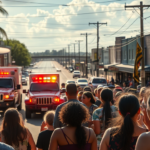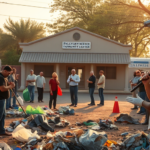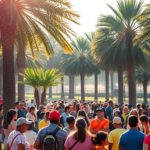Implant Offers Hope to Valley Stroke Patients by Reducing Weakness Through Therapy
A cutting-edge medical implant is set to bring new hope to stroke patients in the Rio Grande Valley (RGV), offering a promising method to alleviate weakness during rehabilitation therapy. This innovation could have a significant local impact by improving the quality of life for many Valley residents recovering from stroke, enhancing both community interest and healthcare outcomes in South Texas.
Revolutionizing Stroke Recovery
The new implant technology, designed to aid stroke patients, functions by stimulating nerve activity, thereby reducing muscle weakness. This breakthrough comes as a beacon of hope for those who have been grappling with limited recovery options. The implant’s core mechanism involves transmitting electrical pulses to affected areas, facilitating better muscle control and possibly expediting the rehabilitation process.
Dr. Luis Ramirez, a neurologist at a local RGV hospital, praises this development: “This implant is not just a medical advancement; it’s a lifeline for our patients. It allows for a more targeted approach to rehabilitation therapy, which means quicker recovery times and a better chance of returning to normal activities.”
The Local Impact in the RGV
For the Rio Grande Valley, an area with an aging population and higher-than-average stroke incidence, this implant could transform the rehabilitation landscape. Stroke survivors in the RGV have often faced long, arduous recovery periods, which can be financially draining and emotionally challenging for families.
Maria Gutierrez, whose father suffered a stroke last year, shares her perspective on the potential benefits: “Seeing him struggle to move his arm has been heart-wrenching. An implant that could reduce his weakness would mean the world to our family. It’s a chance for him to regain his independence.”
A Better Future for Stroke Patients
In recent years, the RGV has made strides to improve healthcare access and infrastructure. Yet, stroke rehabilitation has remained a challenging field. This new implant technology represents a step forward in addressing ongoing issues by providing a more efficient rehabilitation option for stroke survivors.
The implant is not entirely a new concept but a significant advancement in the existing technologies used for improving motor functions in stroke patients. By reducing recovery times and improving physical abilities through targeted therapy, the implant can have a lasting effect on the patients’ well-being and overall healthcare costs in the Valley.
Concerns and Considerations
While the implant offers promising results, medical professionals caution about the importance of thorough training and adaptation periods. Dr. Emily Chen, a noted physical therapist in the RGV, calls for a balanced approach. “Our community needs to understand that while this implant can enhance recovery, it should be used alongside traditional therapy methods to maximize benefits,” she emphasized.
Potential concerns have also been raised about the affordability and accessibility of this technology. Valley residents will need assurance that the implant will be readily available to those in need, without an exorbitant financial burden. Collaboration with insurance providers and medical institutions will be crucial to address these issues.
A Pioneering Step Forward
The potential of this implant aligns with the RGV’s evolving status as a leader in innovative healthcare solutions. Stakeholders are optimistic about the prospect of using technology to bridge gaps in medical care, highlighting the region’s commitment to serving its diverse population through progressive healthcare practices.
The RGV news surrounding this implant development serves as a rallying point for community interest in medical advancements. As healthcare providers, patients, and policymakers discuss the potential of integrating this technology into standard stroke rehabilitation protocols, dialogues are shaping around securing a better healthcare future for South Texas.
Resources and Community Support
Several informational sessions will be organized across the Rio Grande Valley to educate patients, families, and healthcare workers about the implant technology. Interested residents are encouraged to attend these sessions to learn more about the potential benefits and application procedures.
Local hospitals and clinics will also disseminate informational materials to help patients understand the eligibility criteria and other necessary steps for accessing this promising treatment option. Additionally, support groups for stroke survivors and their families are set to expand their focus to include discussions on new therapies and technologies.
In conclusion, this new implant technology heralds a promising advancement in the realm of stroke rehabilitation therapy, with the potential to make a lasting positive impact on the lives of Valley residents. As the community embraces this development, the RGV stands poised not only to improve the quality of life for stroke survivors but also to fortify its status as a forerunner in healthcare innovation in South Texas.







